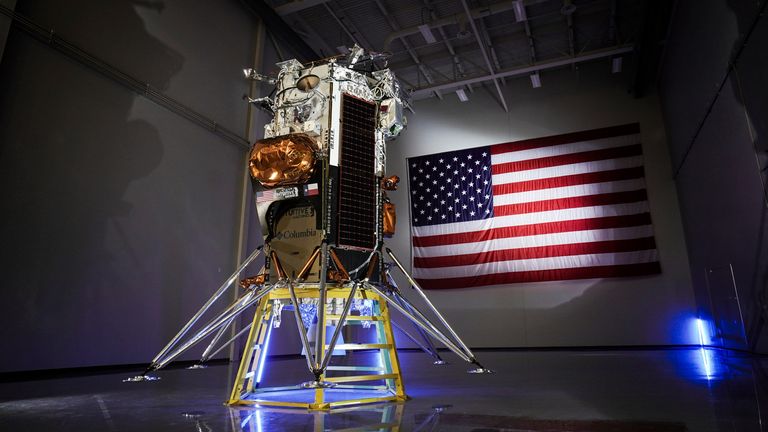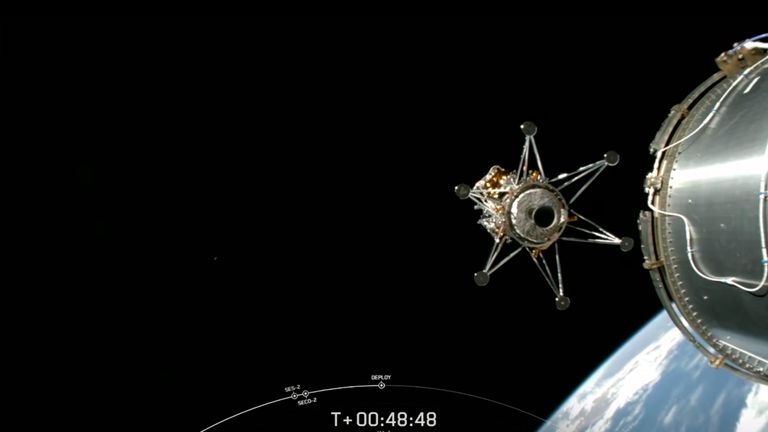US lander successfully touches down on moon for first time in over 50 years


The Odysseus lander has successfully touched down after a “nail-biting” descent saw the first ever privately owned craft reach the moon’s surface.
The Intuitive Machines’ lander is also the first US lander to successfully reach the moon touch down on the moon’s surface in more than 50 years – since the last of NASA’s Apollo programme in 1972.
There was applause and cheers in the Houston control room as landing success was confirmed after a few tense minutes.
“I know this was a nail-biter, but we are on the surface, and we are transmitting,” Intuitive Machines CEO Steve Altemus said.
“Welcome to the moon.”
The team had to wait well past the expected touchdown time for confirmation that there was a signal before celebrating.
The lander was successfully launched aboard a SpaceX rocket last week.
Following the latest update: Moon landing live
NASA administrator Bill Nelson called the mission a “triumph” and a “giant leap forward for all of humanity”.
Advertisement
In a televised statement following the successful landing, he said: “Today for the first time in more than half a century the US has returned to the moon.
“For the first time in the history of humanity, an American company launched and led the voyage up there.
“Today is a day that shows the power and promise of NASA’s commercial partnerships.
“Congratulations to everyone involved in this great and daring quest at Intuitive Machines, SpaceX and right here at NASA.
“What a triumph – Odysseus has taken the moon. This feat is a giant leap forward for all of humanity. Stay tuned.”

NASA is the mission’s main sponsor, paying $118m (£93.5m) to put its experiments on board as part of a programme which could eventually see astronauts return to the moon later in the decade.
Odysseus is also carrying six other payloads from commercial companies.
It has landed closer to the moon’s south pole than any other craft.
The region has many more craters, cliffs and boulders than the equator, where the Apollo landings were in the 60s and 70s.
Scientists hope to find layers of ice, or perhaps Arctic-style permafrost, from which they can create hydration for astronauts – something which would enable them to stay for prolonged missions.
This breaking news story is being updated and more details will be published shortly.
Please refresh the page for the fullest version.
You can receive breaking news alerts on a smartphone or tablet via the Sky News app. You can also follow @SkyNews on X or subscribe to our YouTube channel to keep up with the latest news.